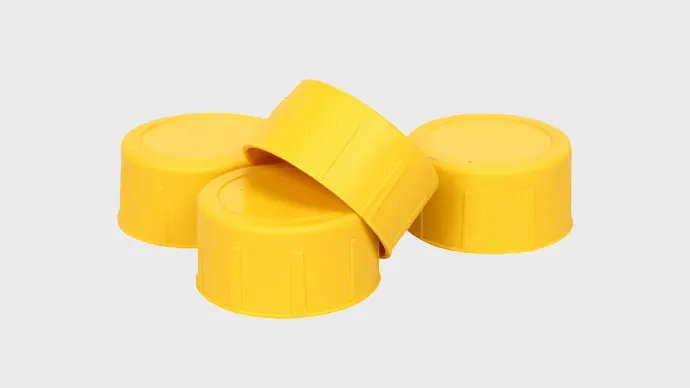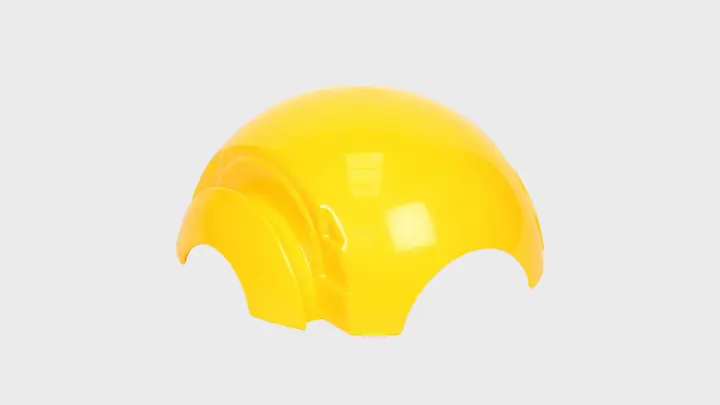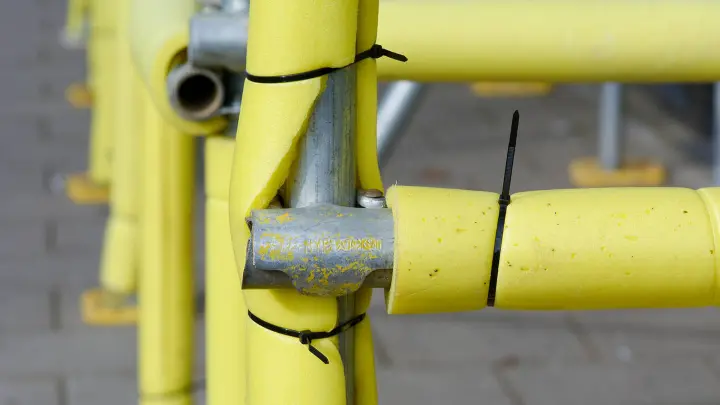Scaffolding caps and padding do more than just cover exposed ends. They’re also a key part of protecting workers and preventing damage to scaffolding gear. In this blog, we’ll walk through the different types and explain their main uses.
What Scaffold Caps and Padding Do
These are types of protection that fit over scaffold ends, fittings (e.g., couplers), and tubes. Most are made from plastic and foam, designed to provide extra protection.
They work by reducing the risk of injuries by softening hard or sharp edges that workers, including passersby, might bump into. This is especially crucial in areas where workers are in close proximity to scaffolding.
Caps and padding also protect the scaffolding itself. By covering the ends and joints—water, dirt, and debris are less likely to get into the tubes or fittings. Not only does this keep the structure and equipment in good condition, but it also helps save on repair or replacement costs down the line.
On top of that, using scaffold caps and padding supports site compliance with UK safety standards. These include general duties under the Health and Safety at Work etc. Act 1974 and The Work at Height Regulations 2005.
While neither is a legal requirement, they’re widely recognised as good practice for improving workplace safety.
Note: Fittings are used to join the various parts of the scaffold, keeping them in place. Some have pointed ends, while others are made from rust- and dent-prone materials—hence, they benefit from reinforced protection.
Types of Scaffold Caps and Padding Protection
Now let’s go through the main options and how they’re used:
Scaffold fitting caps
These are small inserts that go into the open ends of exposed scaffold fittings. They’re pushed into the bolt head opening on couplers, especially right-angle and swivel couplers.
Compact but effective, they keep out dirt and water from the bolt head, reducing rust and wear over time. The caps also act as a buffer if someone comes into contact with the fitting.
For reference, take a look at these scaffold fitting caps. They come in a bag of 1,000 and are available in yellow for better visibility.
Scaffold tube caps
These are designed similarly to fitting caps but are made to cover the tube openings and are a bit bigger. The end cap slots onto it much like a lid pops onto a container—quick, secure, and without needing any tools.
Scaffold tubes tend to accumulate debris, like water or rubble. For instance, uncapped tubes left out during heavy rain end up with the lower section filled with water or mud. This can add weight and lead to rust.
The tube edge can also be rough or sharp, especially if it’s been trimmed on-site. If someone brushes against it, they could get a cut or tear their clothing. A cap covers that edge and makes it much safer.

Scaffold coupler caps
These are made to clamp onto couplers—used to fasten and connect tubes in a tubular scaffold system. The fittings have a clamping mechanism that tightens around the tubes. If left as is, workers or passersby might catch their arm, which is where coupler caps come in.
Take these ball joint caps, for instance. They feature a rounded design that mounts onto double and swivel couplers.
The cap comes in two parts, with each half designed to clip together, forming a complete cover around the coupler. The bright yellow makes them highly visible. Some designs are moulded to fit the shape of the coupler itself, making them less bulky.

Foam tube padding, also known as yellow foam protector, is what it sounds like—a long, soft foam tube made from closed-cell polyethylene or similar material. It doesn’t absorb water and is lightweight, flexible, and durable enough to take a few knocks. If someone walks into an exposed pole or low bar, the foam padding softens the blow.
The padding looks like a pool noodle but with a slit so it can wrap around metal scaffold poles. It’s about a metre or two long and comes in bright colours like yellow, making scaffold edges and low-level poles more visible.

SP Group is a trusted construction and scaffold supplier in the UK and Ireland. For more information about these materials, reach out to us at +44 28 9442 8611 or email customercare@s-pgroup.com. Our 5-star rated customer service is ready to assist you in finding the right scaffolding protection.